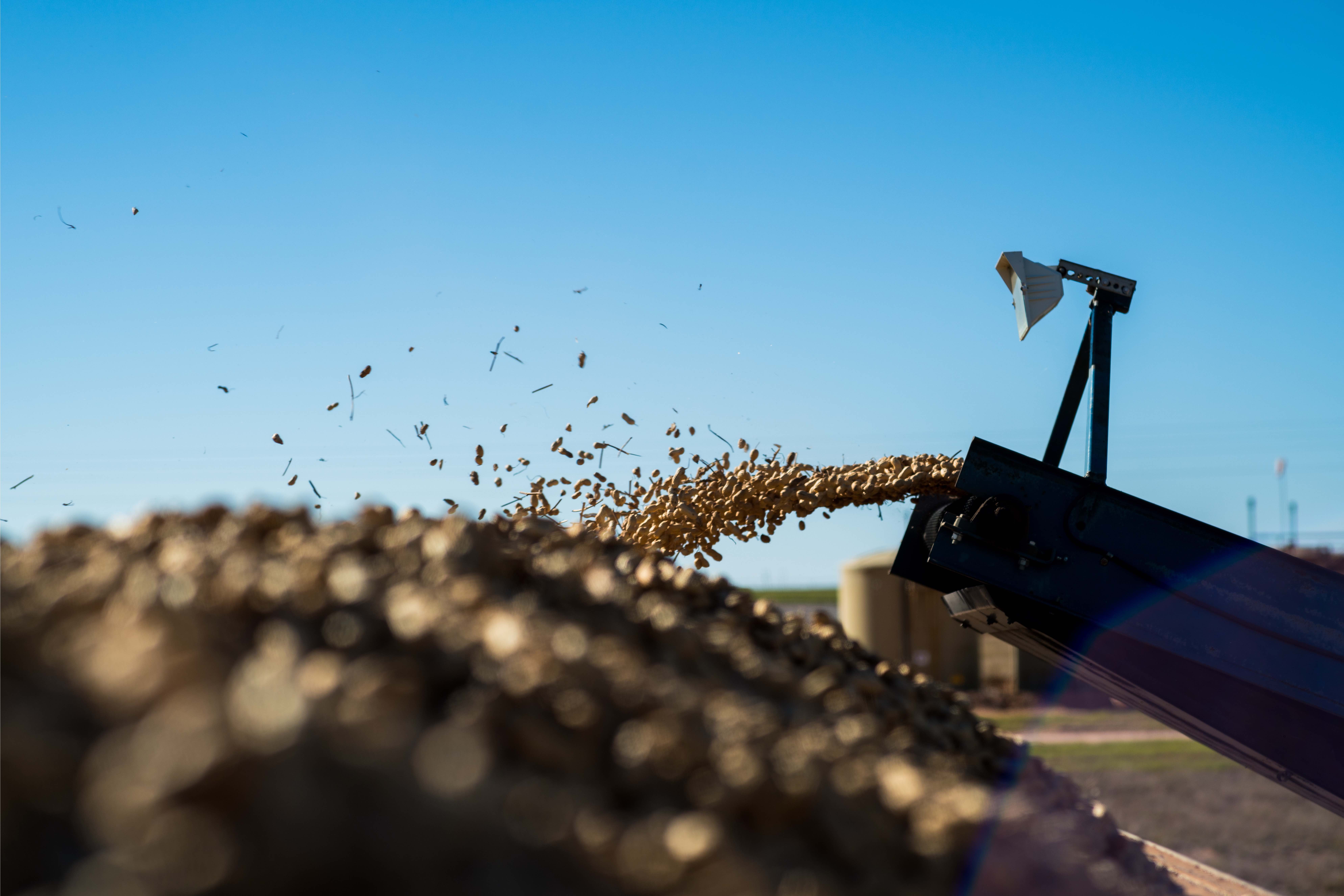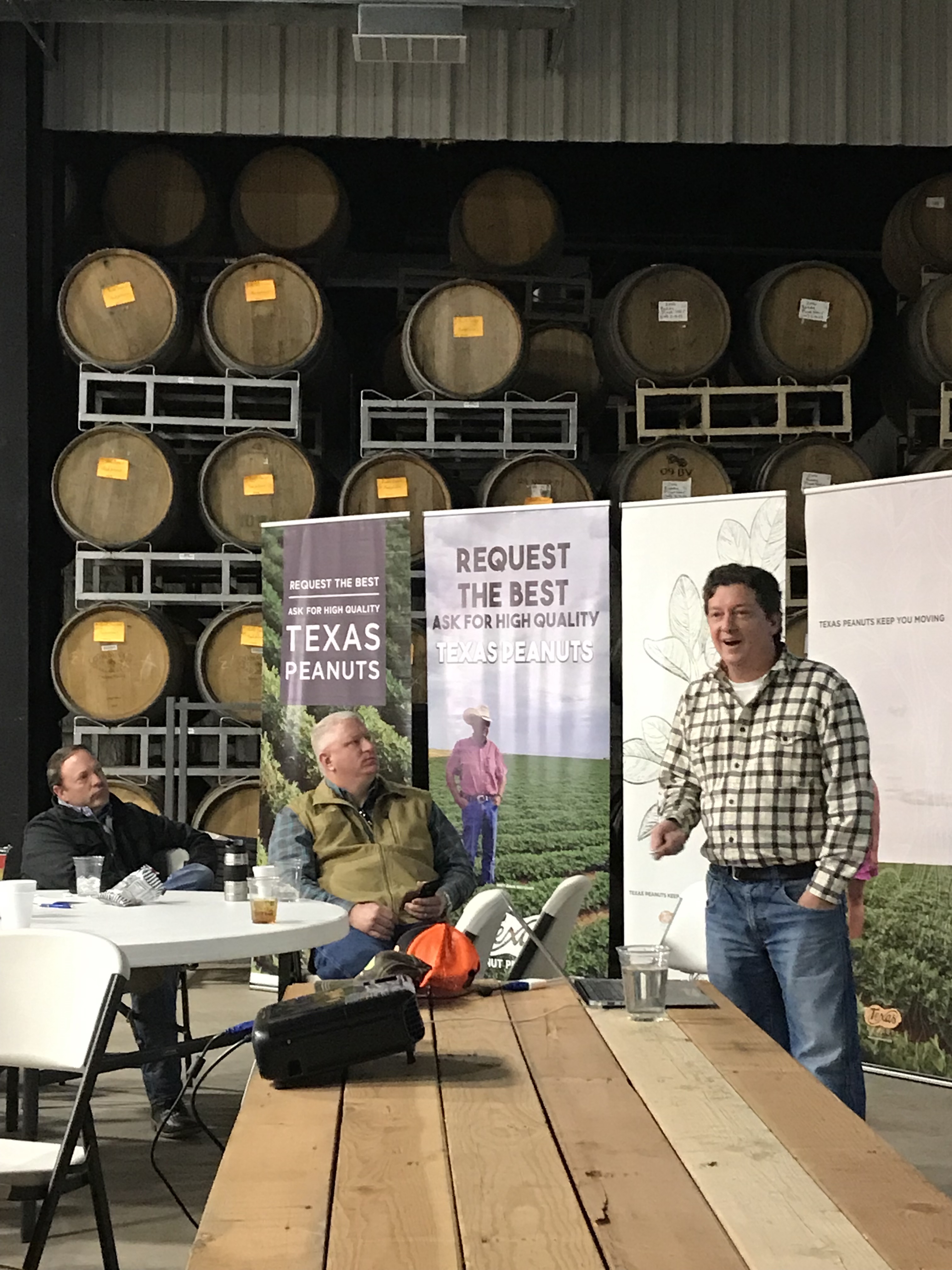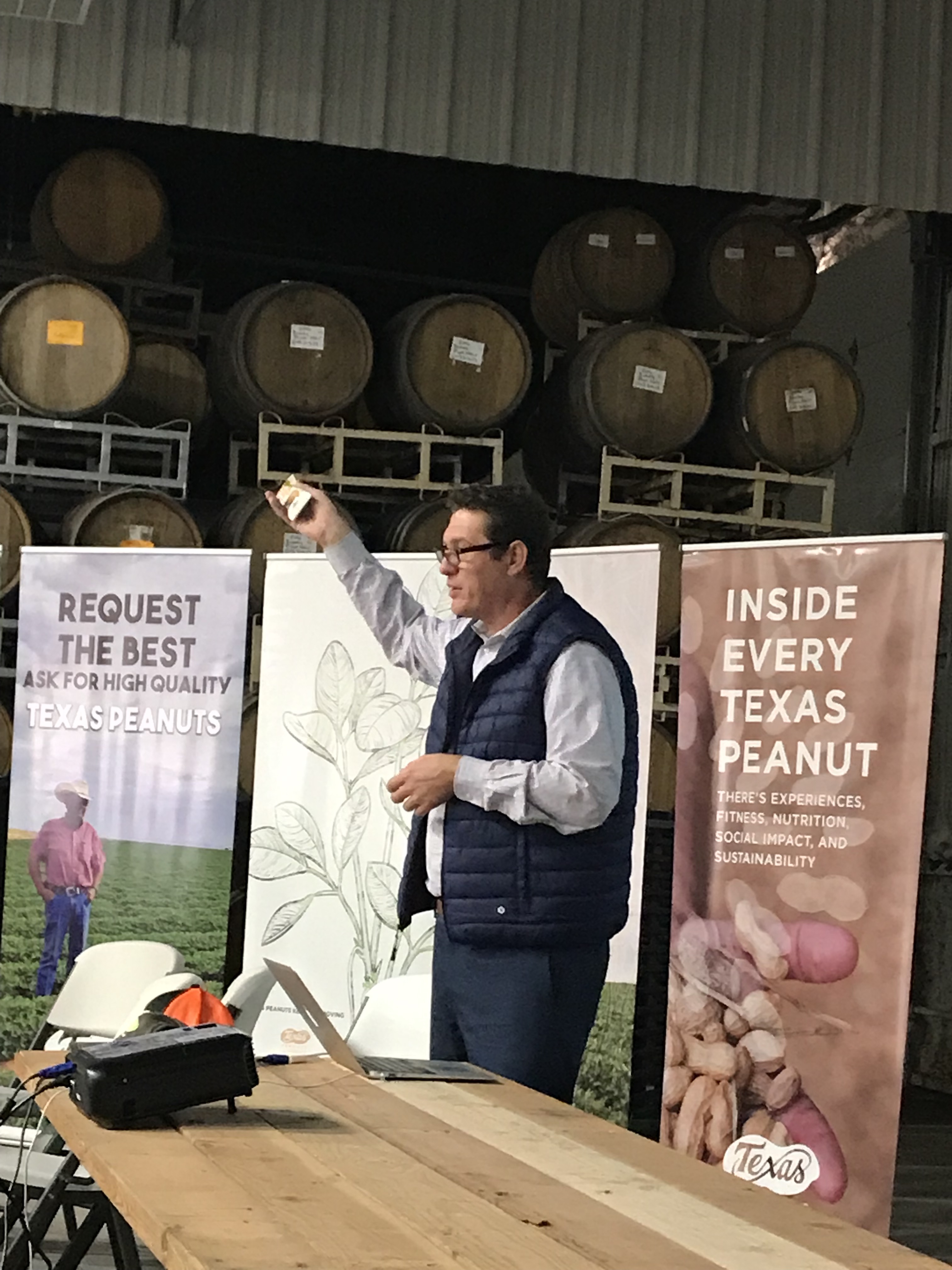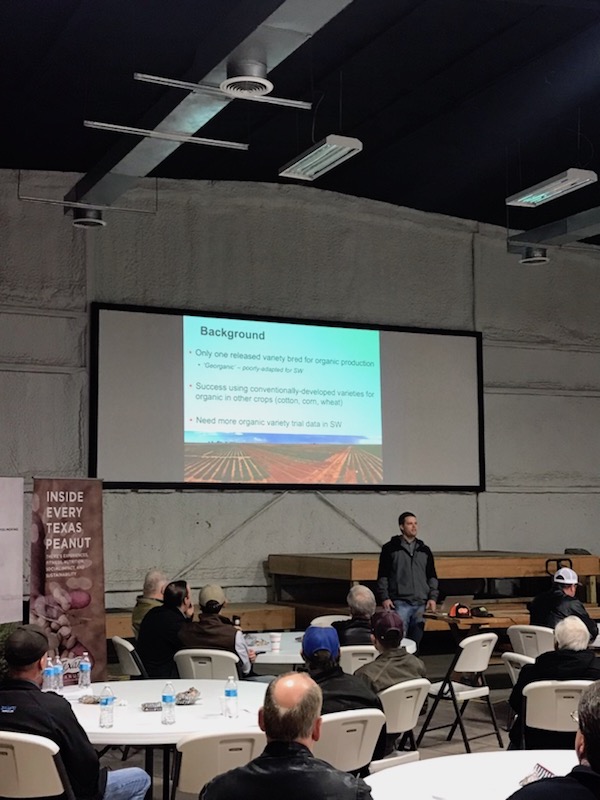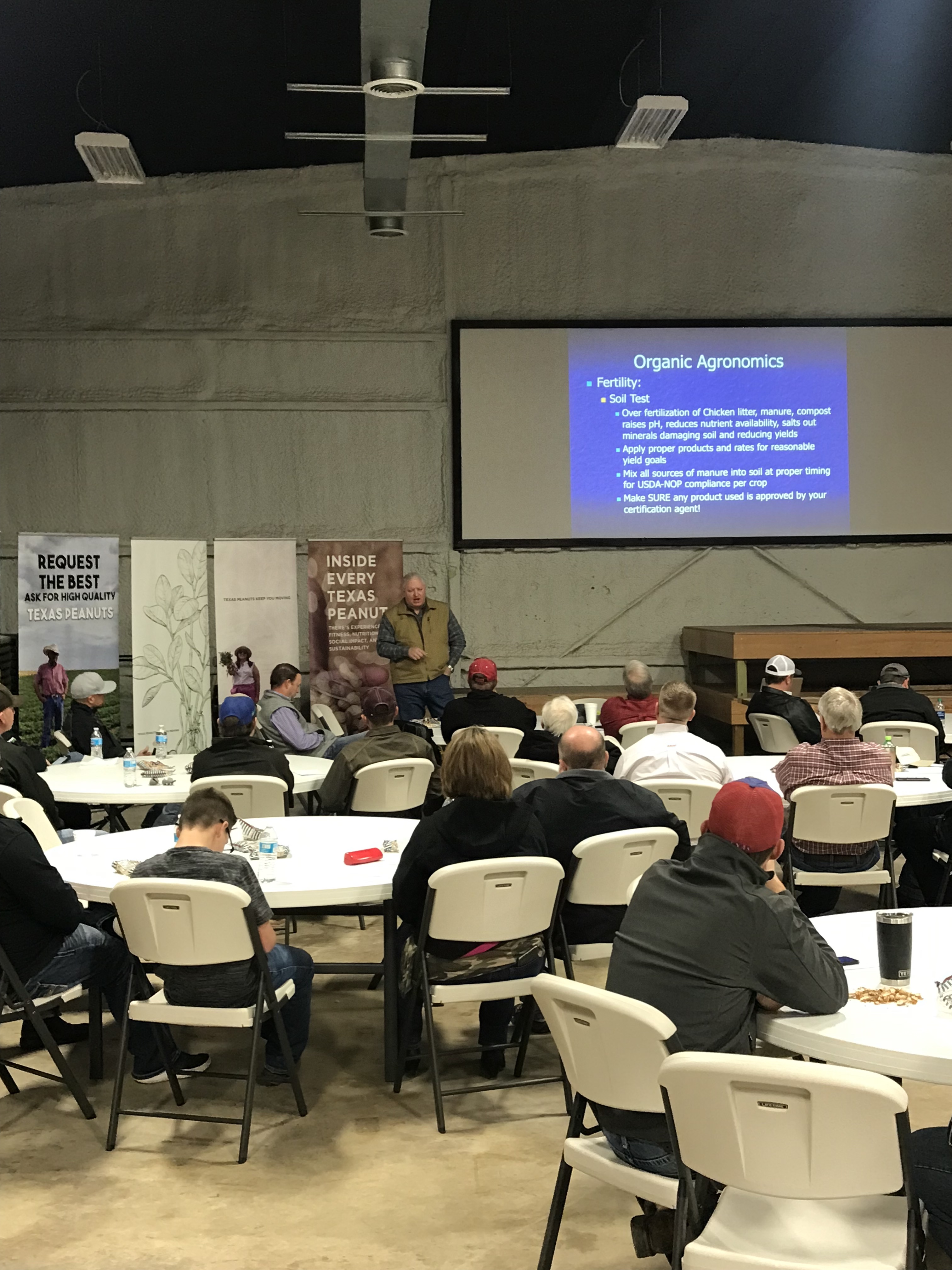SAFETY NET PEANUT PLC PAYMENTS MADE
Peanut farms with peanut base have been receiving payments caused by low peanut prices for the 2016 peanut crop. USDA declared the average price to be $394 per ton or ($0.1975 lb). The Farm Bill provides that the reference price for peanuts is $535 per ton ($0.2675 lb). To obtain the PLC payment amount, deduct the average price from the reference payment yielding the PLC Payment or $141 per ton. The payment is reduced by 6.9% sequestration. Payments are limited to $125,000 per eligible producer. Payment limitation includes benefits received from peanut market loan gains, loan deficiency payments and ARC/PLC payments for peanuts. Another tremendous asset for peanut producers is that there is a separate payment limit (no other crops included). Here is a summary of the payments from USDA – all influenced by low commodity prices this past year.
PEANUT CONTRACTS
With farmers filling earlier signed contracts between $450 per ton and $500 per ton in the Southeast, What can a farmer contract with the extra production? Some shellers have traded small tonnage of Southeast contract overages at 20.68 option ($ 375 price). As of Friday, 10/20, some shellers lowered the price to $ 354.32 price (loan). No premium for high oleic overages. These option contracts apply only to tons delivered over contract. Farmers without a contract have only the loan of $355 per average ton + grade. Tonnage counted October 23 – 1,942,884 tons – (50%) of October estimate.
USDA FINALLY PUBLISHES RULE CHANGE
USDA Agricultural Marketing Service final rule (7 CFR Part 996) published in the Federal Register revises the minimum quality and handling standards for domestic and imported peanuts marketed in the United States.
This rule implements a recommendation from the Peanut Standards Board to revise the minimum quality and handling standards for domestic and imported peanuts marketed in the United States (Standards). The Board advises the Secretary of Agriculture regarding potential changes to the Standards and is comprised of producers and industry representatives.
This action relaxes the allowance for damaged kernels in farmers stock peanuts when determining segregation. This change increases the allowance for damaged kernels under Segregation 1 from not more than 2.49 percent to not more than 3.49 percent. The requirements for Segregation 2 are also adjusted to reflect this change. The Board recommended this change to align the incoming standards with recent changes to the outgoing quality standards and to help increase returns to producers.This final rule becomes effective Feb. 1, 2018 and will not involve the 2017 peanut crop.
USDA COMMENTS ON PEANUT ESTIMATE
Storm Damage May Affect Huge Supplies of Peanuts – U.S. peanut production for 2017/18 is forecast to expand to 7.78 billion pounds. If realized, this year’s peanut crop would be 15 percent higher than the previous record in 2012/13 and exceed last year’s harvest by 2.1 billion pounds (37 percent). The year-to-year production increase for Georgia alone would be 1.1 billion pounds. This month’s change is based on an increase for the average yield to a record 4,254 pounds per acre and larger harvested area. Based on the current production forecast, season-ending peanut stocks are seen accumulating to a 5-year high. Inventories could nearly double to 2.7 billion pounds from the final 2016/17 carry out of 1.44 billion. The forecast for excellent production is provisional, however. In early September, Hurricane Irma produced heavy rainfall over much of the Southeast’s peanut growing region. This event occurred after the collection of this month’s yield survey data.
Just a slight change from last month, however, U.S. peanut production in 2017/18 is forecast up 37 percent to 7.7 billion pounds (3,893,000 tons). Domestic food demand for peanuts in 2017/18 is forecast up only 3.6 percent to 3.2 billion pounds. Strong export demand for U.S. peanuts may continue as well—level predicted is 1.5 billion pounds (750,000 tons). Ending stocks is sure to impact contracts for next season. With a need of about 500,000 in the carry forward, the industry will have an excess of 1,344,000 tons, over 30% of the peanuts needed for next season.
PLC PAYMENTS READY FOR DISTRIBUTION
Agriculture Secretary Sonny Perdue has announced that over $9.6 billion in payments will be made, beginning this week, to producers through the Agriculture Risk Coverage (ARC), Price Loss Coverage (PLC) and Conservation Reserve (CRP) progStates Department of Agriculture (USDA) is issuing approximately $8 billion in payments under the ARC and PLC programs for the 2016 crop year, and $1.6 billion under CRP for 2017.
2017 PEANUT CROP
Peanut production is forecast at 7.79 billion pounds (3,893,000 tons), up slightly from the September forecast and up 39 percent from the revised 2016 total of 5.58 billion pounds. If realized, production for the Nation will be the highest on record. Harvested area is expected to total 1.83 million acres, unchanged from the September forecast but up 19 percent from 2016. Based on conditions as of October 1, the average yield for the United States is forecast at 4,257 pounds per acre, up 3 pounds per acre from September and up 623 pounds per acre from the 2016 average yield of 3,634 pounds per acre.
The average United States yield will be the highest on record, if realized. Record high yields are forecast in Alabama, Georgia, Mississippi, and South Carolina. If realized, production in Georgia and South Carolina will be the highest on record. As of October 1, twenty-five percent of the 2017 peanut crop had been harvested, slightly behind last year but 4 percentage points ahead of the five-year average. Seventy-five percent of the crop was rated in good to excellent condition on October 1, compared with 60 percent at the same time last year.
FDA APPROVES FIRST COMMERCIAL PRODUCT FOR PEANUT ALLERGIES
The approach toward preventing peanut allergies has changed dramatically in recent years. The National Peanut Board has led a campaign to solve the peanut allergy issue on behalf of the entire peanut industry. Now the US Food and Drug Administration has approved the first commercial product, called Hello, Peanut!, to help inform the public that early peanut introduction and regular consumption can reduce the risk of peanut allergies in young children.
The Hello, Peanut! introduction kit offers convenience in the form of packets of peanut powder blended with oat given in increasing quantities for seven days, as long as children tolerate it well. After which maintenance packets are recommended for use up to three times a week. The introduction kit is $25, and the maintenance kit sells for $20 for eight packets.
The FDA decision was informed by the landmark Learning Early About Peanut Allergy study published in 2015. It showed that high-risk children who regularly consumed peanuts in infancy had far fewer peanut allergies by age 5 than their counterparts who avoided peanuts over the same span of time. This understanding led to new guidelines published in 2017 by National Institutes of Health about giving peanuts to babies to protect against peanut allergies.
By offering peanuts early in life – between 4 and 6 months of age – and continuing with regular consumption, we can prevent the onset of peanut allergies in many of these children. That is good news for the peanut industry.
THE SEAM IMPLEMENTS PRORAM TO HELP FARMERS AND HANDLERS
The Seam, a leading provider of agribusiness software and trading solutions, has announced the launch of new business intelligence tools to provide peanut farmers and handlers with actionable data for changing or improving practices both on and off the farm.
Instant grading and inspection information is now available to peanut farmers through automated text messaging and includes foreign materials, grade, moisture levels and other attributes. A new online Producer Portal provides access to graphical metrics and more detailed intelligence, including inspection certificates, contract documents, farm purchase reports, electronic warehouse receipts and so forth. This technology, which is the first of its kind in the peanut industry, comes at the optimal time with this year’s historic-sized crop.
“Just as businesses rely on instant, meaningful data for making sound decisions, so do farmers,” said Mark Pryor, Chairman and CEO at The Seam. “This technology provides the insights needed to quickly adjust practices ‘on-the-spot’ for increasing efficiency and value, thereby saving time and money. We’re excited to get this software into the hands of more producers and handlers, as it pushes us another step toward our mission of investing in the industry, providing modernization to agriculture and being a truly collaborative partner to our customers.”
The new business intelligence tools were added to The Seam’s Peanut Commodity Management Platform, which was released a year ago. This web-based platform provides purchasing, inventory management, logistics, receipting, document digitization and more, while integrating with USDA and other industry systems and organizations.
By the numbers: (1) 5: the number of shelling plants using the platform. 2) 42: the number of peanut buying point customers in Alabama, Florida, Georgia and North Carolina. 3) 100s: The number of SMS text alerts being sent daily to farmers with real-time, actionable data. 4)1000s: the number of producers the software is currently available to. 5)1,000,000 tons: the amount of farmer stock peanuts The Seam is anticipating to process through its platform during this year’s historic harvest.
FISCAL 2018 BUDGET PASSES HOUSE WITH $10 BILLION CUT
The House passed a fiscal 2018 budget resolution Wednesday that would require a $10 billion cut in agriculture spending. The Senate version of the resolution would require no cut to the farm bill, and Chairman Conaway expects that to be the case in the final budget. Conaway believes that the cut will disappear during negotiations with the Senate. The bill’s architects on the Senate and House Ag Committees were hoping to convince Budget Committee leaders to increase funding to help revamp cotton and dairy supports and tweak the subsidy system for grain farmers.
Nearly 80% of the projected spending on the current 2014 farm bill is for nutrition programs. That leaves roughly $6 billion per year for conservation programs, $8 billion annually for crop insurance, $5 billion annually for commodity programs and $1 billion annually for other programs. Some good news for farmers is that the 2018 tax-cut package proposed by the President proposes a repeal of the estate tax, something farm groups have been in favor of for years.
PEANUT PROGRAM WORKS
The Southern Peanut Farmers Federation, National Peanut Buying Points Association and the American Peanut Shellers Association met with Capitol Hill policymakers on the upcoming 2018 Farm Bill. Peanut Leaders stressed that the Price Loss Coverage (PLC) program, included in the 2014 Farm Bill, has worked for rural economies encouraging local jobs. In addition, the 2014 Farm Bill peanut provisions continue to assure consumers a safe, affordable food supply. The peanut organizations emphasized maintaining the current PLC program in the 2014 Farm Bill including these key provisions:
· Current Reference Price for Peanuts
· Separate Peanut Payment Limit (as established in the 2002 Farm Bill)
· Storage and Handling Provisions
CHINA AS A POTENTIAL MARKET AGAIN
China is buying U.S.-produced peanuts on a very high level. The USDA says that will continue. An Agri-Pulse report says China will purchase $100 million dollars of American peanuts. Sales data so far in 2017 says it very well could happen. The U.S. has already sold $29 million dollars’ worth of peanuts from Texas, Georgia, Alabama, North Carolina, Virginia, as well as other states in just the first seven months of this year.
The peanut industry is taking notice of the potential for China as a large market for its products. Total peanut exports were worth $4 million dollars just a few years ago, which means peanut farmers are very optimistic about the future of China as an export market. The jump in peanut exports to China actually began just last year. China ramped up its imports during the summer of 2016, with the total imports last year at $172 million. That’s a roughly 700 percent increase from the $22 million China imported as recently as 2015.
via Peanut Farm Market News, a peanut hotline service of The Spearman Agency, Tyron Spearman, editor


